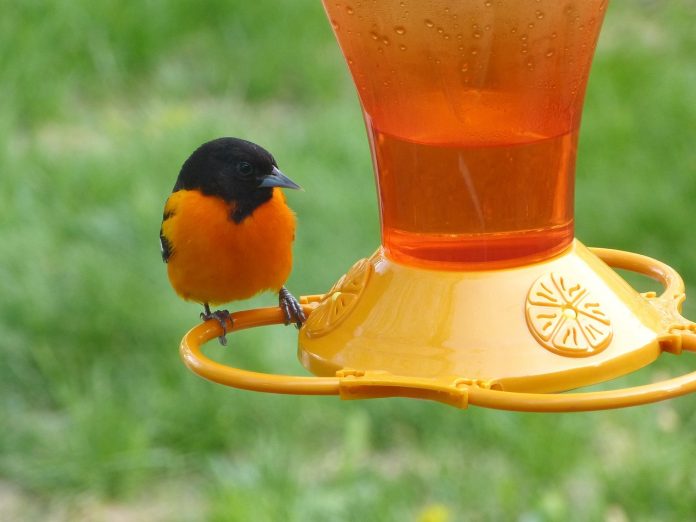Choosing the best of anything is both subjective and debatable.
I consider the following birds the best of spring migration because: 1, They are easy to see; 2, They are easy to identify by sight and/or voice; and 3, they are spectacularly beautiful.
Scarlet tanagers top my list because they are the most spectacular visitor from the Neotropics.
A bird of the eastern deciduous forest, scarlet tanagers often perch and sing from the tops of trees. From within the forest, they can be difficult to see, but from the edge of the woods, they are hard to miss.
Know the traits
The male’s brilliant red body is more vibrant than a male cardinal. In sunlight, it almost seems electrified. Jet black wings and tail complete the male’s plumage. Every time I see a male scarlet tanager, I imagine I’ve been transported to the American tropics.
At the No. 1 position on my list of favorite migrants are male Baltimore orioles, which can often be found in tall backyard trees such has elms and sycamores. From below its bright orange underparts almost glow.
Add an orange rump and outer tail feathers to its black hood and back, and it’s enough to make any birder/baseball fan follow the Orioles. Its song is a loud series of whistled musical notes. Attract orioles with hummingbird nectar, orange slices, and grape jelly.
My favorite feeder birds this time of year are rose-breasted grosbeaks. They love black-oil sunflower seeds. About the size of a cardinal, these chunky grosbeaks have an entirely black head, a huge, pale, seed-cracking bill, and a brilliant inverted crimson triangle on the breast.
The colors
The body is black above and white below. In flight, red underwing linings and white wing patches are obvious. Females are streaky brownish gray and suggest a big sparrow. Listen for the male’s rapid series of musical phrases.
I saw my first ruby-throated hummingbird on May 3 this year, and the next day two more visited the feeder. These tiny feathered jewels need no introduction. Adults weigh less than a nickel, and their beating wings are a blur.
The best thing about hummers is that they find nectar feeders irresistible. They lap up nectar by extending the tongue beyond their long straw-like bill. Keep feeders clean and nectar fresh and you’ll have hummers until late August. (Nectar recipe: mix one part table sugar with four parts boiling water, cool, and refrigerate.)
My favorite migratory blue birds are indigo buntings. I haven’t seen or heard one yet this year, but they should arrive any day.
The male’s deep metallic blue body almost shimmers in bright sunshine. Females are cryptically colored to be well camouflaged when on the nest. Both sexes come to seed feeders. Look for buntings in overgrown old fields, along brushy roadsides, and rights-of-way.
Another common migrant that can be found in indigo bunting habitat are yellow warblers. Male yellow warblers can be identified by reddish stripes that decorate the chest and breast. And I always recognize the yellow warbler song by putting it into words — “Sweet, sweet, sweet, I’m so sweet.”
My first yellow warbler arrived on May 4. My favorite sound of spring is the song of the wood thrush. I heard the first flute-like “Ee-oh-lay!” late in the day on May 4. When I hear their evening vespers, I know the day is almost done.
Haunting sounds
And in the morning, there’s no better alarm clock than the haunting wood thrush song just before dawn. Wood thrushes can be difficult to see because they spend most of their time in the dense understory of eastern woods, but their voice is unmistakable.
If you’ve already stopped filling feeders, don’t feel guilty. There is plenty of live natural food in the woods and fields. But do offer fresh water every day for drinking, bathing, and cooling off. You might be surprised how much birds enjoy cool, fresh water.
If you have favorite spring migrants, feel free to send me a list of the ones you enjoy most and why.













